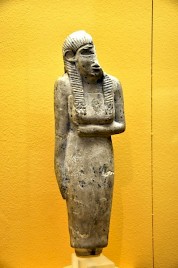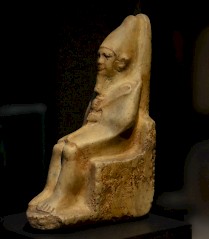Early Dynastic Egypt
Q187979Early Dynastic Period: name for the two first dynasties of ancient Egypt (c.3000-2675 BCE).

The Early Dynastic Period covers the two first dynasties after the unification of Upper and Lower Egypt. It follows the Predynastic Period. Several developments continued, such as the formalization of an art style that would more or less maintain its static nature throughout the entire course of ancient Egyptian history.
From Abydos to Memphis
In the Early Dynastic Period, Egypt’s center of power shifted from the South (Abydos in Upper Egypt) to the North (Memphis in Lower Egypt). According to Manetho, a King Menes (who may or may not be identified with Narmer) founded this new city at the apex of the Delta. Some modern Egyptologists argue that it was in fact King Hor-Aha who founded the city of the “White Walls” (Inbu-Hedj in ancient Egyptian). This ruler was the second pharaoh of the First Dynasty and thus the son of Narmer and his consort, Queen Neithhotep. (Others believe that Hor-Aha was in fact Manetho’s Menes.)
However this may be, the desert plain behind the city of Memphis, Saqqara, was put into use as a necropolis for the elite members of society as well as royalty. Impressive Early Dynastic tombs have been unearthed here and there seems to have been a trend to build ever bigger and wealthier tombs.

The tombs consisted of one or more underground burial chambers and storage rooms and were covered up with a structure of mudbrick. This structure resembled a couch and is therefore called a mastaba, Arabic for couch. The presence of these tombs in Saqqara indicates a growing organization within the Egyptian society, which was made possible by exploiting the country's resources (e.g, copper and natural stone). The invention of writing at the end of the Predynastic Period presumably stimulated and facilitated further administration.
Abydos, in the meantime, lost its political significance, although it remained in use as a royal burial place: in the Umm-el-Qaab necropolis, the tombs of the First Dynasty kings as well as various kings from the Second Dynasty have been unearthed. In this early age, it was not uncommon for the king to have two tombs, one in Saqqara and one in Abydos, although some of the presumed "double tombs" appear to be the final resting places of wealthy aristocrats.
Although the royal tombs on both locations have been looted and lack detailed mural paintings, various grave goods (often bearing the name of the deceased) have remained in situ. These objects include wooden and ivory labels, steles, stone pots, and vases.
One specific grave good of the First Dynasty is the solar barque. Twelve of these boats have been unearthed and excavated at Abydos, while others are known from Saqqara and Helwan (a necropolis of Memphis and a suburb of modern Cairo). The ancient Egyptians believed that this was the vessel by which the sun god Ra traveled through the heavenly sea of the goddess Nun. Every night, he would pass through twelve ports (one representing each hour of the night), defeat the snake Apophis, and eventually rise as the sun the next morning. The Egyptians also believed that the pharaoh, once deceased, would embark on the sun god’s boat and join this journey through the Underworld, encountering various challenges along the way before the weighing of the heart.
The kings of the first dynasty expanded their influence to the south, gaining control of Lower Nubia.
First dynasty (c.3000-c.2825)
| Narmer (Menes?) | |
| Aha | |
| Djer | |
| Djet | |
| Merneith | |
| Den (Udimu) | |
| Anedjib (Enezib) | |
| Semerkhet | |
| Qaa |
Second dynasty (c.2825-c.2675)
| Hetepsekhemwy | |
| Nebra | |
| Ninetjer | |
| Weneg | |
| Sened | |
| Peribsen | |
| Sekhemib (identical to Peribsen?) | |
| Khasekhemwy |